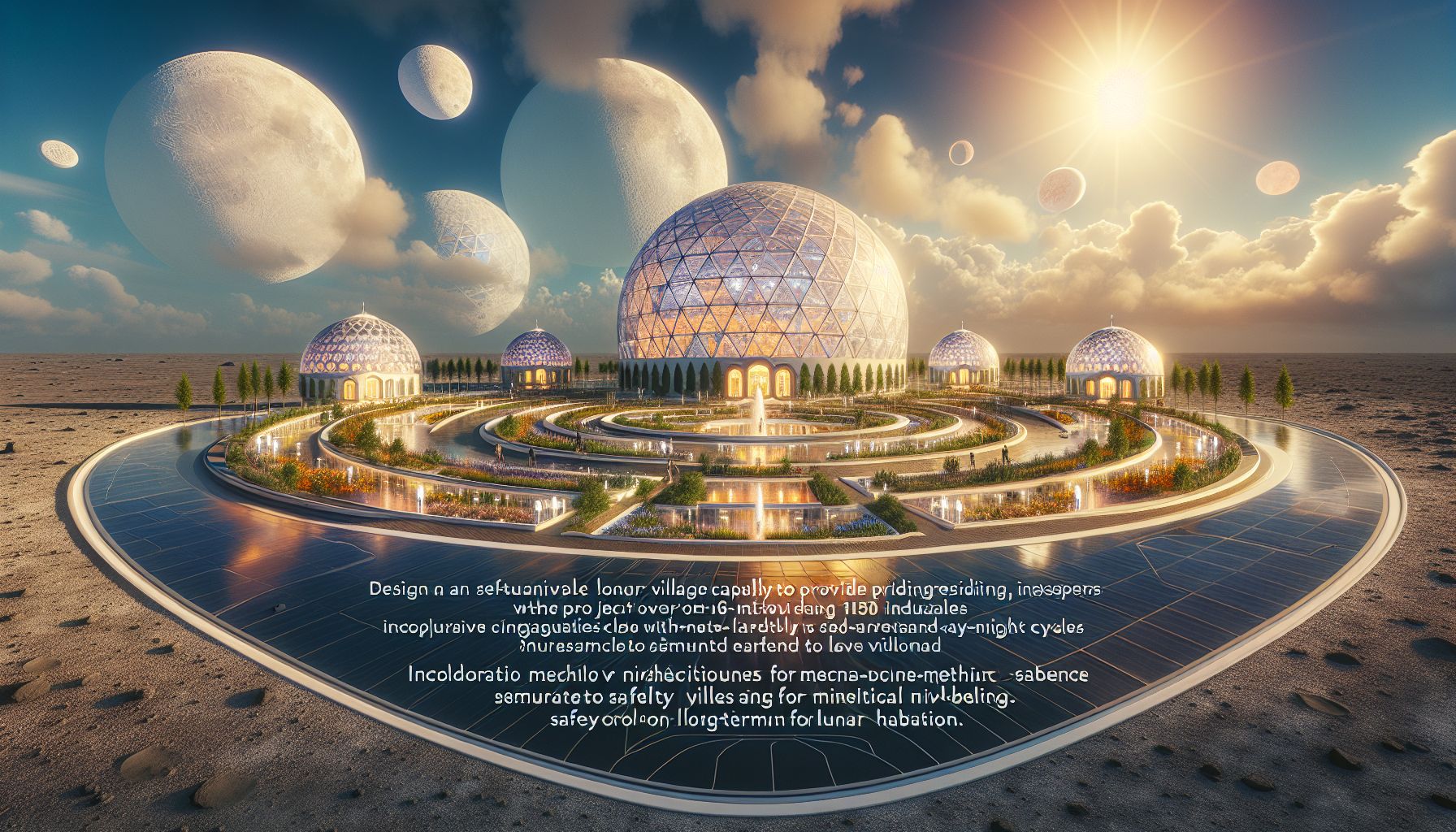TU Delft Students Design Self-Sustaining Lunar Village

Delft, Friday, 26 July 2024.
Space Oasis Delft, a TU Delft student team, has designed a groundbreaking lunar village capable of housing over 150 residents. The project incorporates innovative features such as biomimicry, a self-sustaining biosphere, and simulated day-night cycles, prioritizing both safety and mental well-being for long-term lunar habitation.
A Vision for Sustainable Lunar Living
The Space Oasis Delft team, comprising innovative students from TU Delft, has envisioned a future where humans can live sustainably on the moon. This ambitious project is not just a leap in space exploration but also a testament to sustainable living principles. By integrating biomimicry, the village mimics natural processes found on Earth to create a self-sustaining environment, ensuring long-term viability for its inhabitants.
Biomimicry and Self-Sustaining Ecosystems
Biomimicry plays a crucial role in the design of the lunar village. This approach involves emulating Earth’s natural ecosystems to create a balanced and self-sustaining biosphere. The village features systems that recycle water, air, and waste, reducing the need for constant resupply from Earth. This closed-loop system is designed to support the village’s 150 residents by maintaining essential life support systems through natural processes.
Simulating Earthly Conditions
One of the standout features of the lunar village is its ability to simulate Earth-like conditions, including day-night cycles and seasonal changes. These simulations are vital for the mental well-being of the residents, as they provide a sense of normalcy and routine in an otherwise alien environment. The artificial cycles help regulate sleep patterns and contribute to psychological health, addressing one of the significant challenges of long-term space habitation.
Prioritizing Safety and Mental Well-being
Safety and mental well-being were primary concerns for the Space Oasis Delft team. The village’s design includes protective measures against lunar hazards such as radiation and meteorite impacts. Additionally, the living spaces are designed to be comfortable and spacious, with communal areas to foster social interaction. These design elements aim to create a cohesive community, reducing the isolation and psychological stress that can accompany long-term space missions.
The Role of TU Delft in Space Innovation
TU Delft, located in Delft, Netherlands, has been at the forefront of engineering and technological innovation. The Space Oasis Delft project is a prime example of the university’s commitment to pushing the boundaries of what is possible. With a focus on sustainability and human-centric design, TU Delft continues to contribute significantly to global efforts in space exploration and sustainable living solutions.
Looking Ahead: Implications for Future Space Missions
The success of the Space Oasis Delft project could have far-reaching implications for future space missions. The principles of biomimicry and self-sustaining ecosystems could be applied to other planets and moons, aiding in the establishment of human colonies beyond Earth. This project not only showcases the ingenuity of TU Delft’s students but also offers a blueprint for sustainable living in space, paving the way for future generations of explorers.

